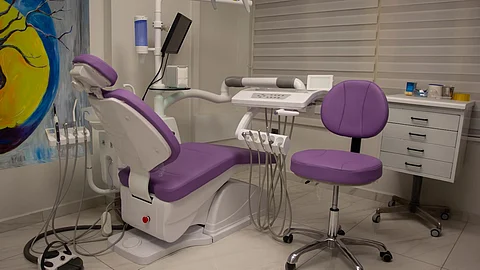

Fear is a human emotion invoked in humans from the time of infancy. Fear is an unpleasant emotion caused by recognizing or perceiving danger or threat of danger which may be physical or psychological in nature.
Every human experiences this emotion pretty commonly and is afraid of something in their life. Sometimes these fears can be as basic as being afraid of horror movies or sometimes they could be debilitating in nature, preventing people from living their life to the fullest.
What is a Phobia?
According to the National Institute Of Mental Health, Phobia is an extreme, irrational fear of something that poses little to no extreme danger. In such cases, individuals may be well aware of the fact that their fears are irrational but even the thought of facing those phobic stimuli or situations may bring anxiety symptoms or panic attacks.
While fear is a natural human reaction, Phobia is an anxiety disorder. A fear becomes a phobia when the mental or physical response to the stimulus is debilitating and intervenes with the day to day well being or functioning of an individual.
What Is Dentophobia?
Dentophobia, also termed as Odontophobia, is an extreme, irrational fear of dentists, dental clinics and dental treatments. People with this phobia are generally opposed to the idea of visiting the dentist even if they are in visible pain or have a deteriorating dental health. A quarter of our population is known to be affected by this phobia and this phobia has been known to affect an individual's oral health and subsequently have an impact on the quality of life.
What Causes Dentophobia?
Possible causes of dentophobia include:
• Past negative experience - A previous negative, traumatic or a painful experience suffered by an individual can instill fear or sense of dread in their minds
• Family History - The risk of developing a phobia increases if there n#39;s a history of dentophobia or any phobia or anxiety disorder amongst the family members
• Informative- An acquisition of fear through listening to negative dental experiences of someone else like a family member, close friends or colleagues
• Insecurities - The individual may suffer from insecurities regarding their poor oral hygiene, alignment of teeth, appearance or color of their teeth
What Are The Triggers of Dentophobia -
Some of the common triggers of dentophobia include:
• Mere thought of visiting a dentist or a dental clinic can instill a sense of distress or anxiety
• Dental clinical setups or waiting for the appointment at dental clinics can act as a trigger in some individuals
• The process of being seated at the dental chair and being prepared for the procedure also acts as one of many triggers
• The sight or sound of dental instruments as well as the thought of the introduction of sharp tools and instruments in the mouth causes anxiety in most of the patients
• The antiseptic smell of dental clinics is also one of the many trigger factors for dentophobia
What Are The Symptoms Of Dentophobia ?
The sign and symptoms of dentophobia include following of these:
• Nausea
• Chills
• Lightheadedness and dizziness
• Excessive sweating
• Breathlessness
• Shaking and trembling
• Increased heart rates
• Feeling of dread, panic or anxiety
• Crying at the thought of visiting a dentist
• Suffering from panic attacks or nightmares the night before the appointment
How To Assess Dentophobia?
Dentophobia can be assessed by the following methods:
• Corah's dental anxiety scale
• The index of dental anxiety and fear
• Modified child dental anxiety scale (MCDAS)
• Dental fear survey (DFS)
How To Manage Dentophobia?
On a positive scale, all phobias can be overcome with the help of several techniques and exercises. Depending upon the severity of phobias, it involves different approaches and techniques adopted to help overcome the phobia. Some of the ways involve:
• One obvious solution includes talking to the dentist and letting them know about the condition. It can help dentist develop an understanding of the situation and they could help an individual by employing gentler and a different approach than a regular one
• Distraction techniques- This involves distracting the patient's attention from the negative thoughts permeating in their head. It can involve physical distraction techniques like advising the patients to focus on some other body parts like wiggling of toes and fingers or it could involve virtual distractions like movies through television or listening to songs through headphones
• Psychotherapeutic Interventions- Behavior or cognitive strategies are the ones employed in psychotherapeutic interventions. Behavior modification therapies aim to modify the behavior using breathing and muscle relaxation exercises as well as employing acupuncture, hypnosis, positive reinforcements, stop- signaling and exposure based treatments like tell- show-do
• Cognitive Behavioral Therapy - This is a combination of cognitive therapy and behavior therapy and is currently the most widely accepted treatment for anxiety and phobia
• Pharmacological intervention - In case where the patient is unresponsive or unwilling to undergo any of the above-mentioned therapies then pharmacological therapies like sedation and general anesthesia are employed
Conclusion
Dentophobia is a very common condition seen in people of all age groups but what could prove helpful in the long run is desensitizing individuals from a very young age by creating awareness about oral health.
Introducing positive reinforcements in children could help instill awareness and interest about oral health from an early age which would encourage individuals at a later point in life to seek help if and when encountered with dental anxiety or phobia. Overcoming dentophobia could help go a long way in improving the quality of life by facilitating proper oral care.
